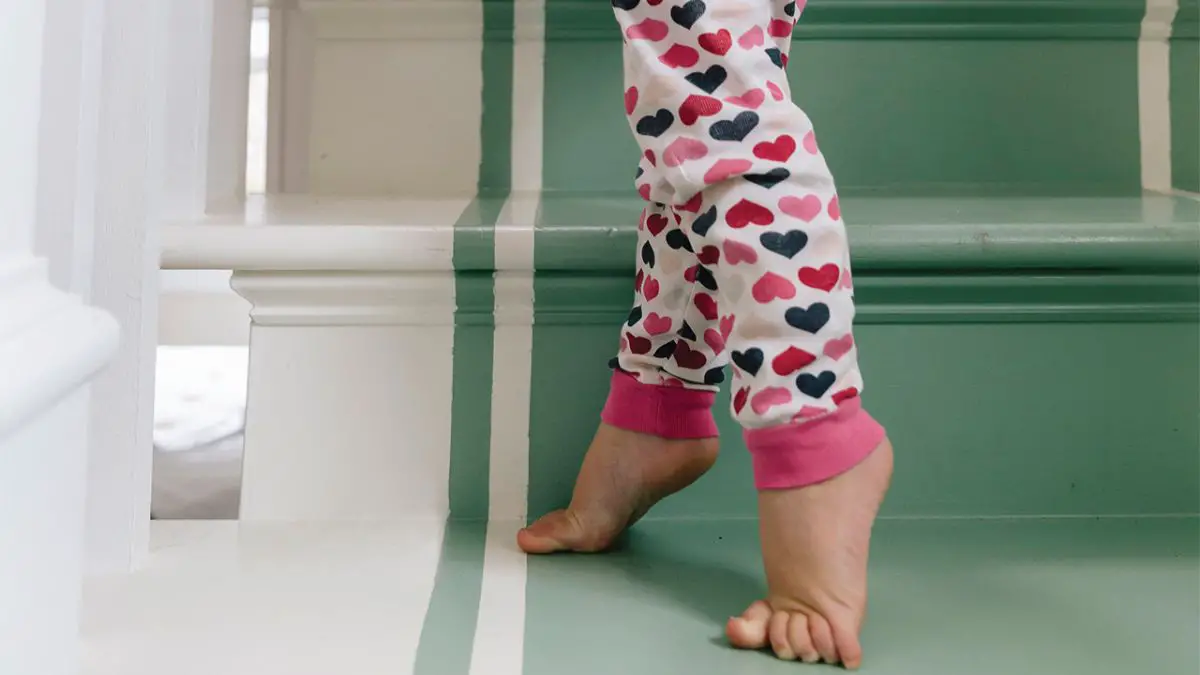One intriguing phenomenon that has captured the curiosity of scientists and parents alike is the tendency of some autistic people to walk on their toes.
This unique trait, known as toe-walking, has sparked numerous inquiries about its underlying causes, potential implications, and the fascinating overlap of neurobiology and behavior.
In this exploratory post, we delve into the reasons why some autistic people adopt this distinct gait.
Autism and Gait Abnormalities
Autism, or Autism Spectrum Disorder (ASD), is a neurodevelopmental condition characterized by various symptoms, including difficulties with social interaction, communication, and repetitive behaviors.
One of the less understood aspects of this condition is its relationship with motor skills development in autistic children, particularly the prevalence of toe walking.
Toe walking refers to a walking style where the heels do not touch the ground, and the individual walks on the toes or the balls of the feet.
While this is a common developmental stage in young children, persistent toe walking beyond the age of two may be a sign of neurodevelopmental conditions like autism.
Toe-Walking Patterns and Autism Spectrum Disorder
Several studies have indicated a higher prevalence of toe walking in children with autism compared to neurotypical children.
A study analyzing the gait data of over 2 million children found that 8.4% of children diagnosed with ASD also had a diagnosis of toe walking, compared to only 0.47% of typically developing children.
This suggests that toe-walking behavior in autistic individuals could potentially be an early sign of autism in movement.
However, it’s important to note that not all children with ASD toe walk, and not all toe walkers have ASD.
Other neurodevelopmental and neuromuscular conditions may also involve toe walking.
The Role of Sensory Processing in Autism and Toe Walking
One of the potential causes of toe-walking in autism is related to sensory processing issues, a common trait in autistic individuals.
The vestibular system, which involves the inner ear and the central nervous system, plays a vital role in our sense of balance, spatial orientation, and body position.
Dysfunction in this system, which is often seen in individuals with ASD, can potentially lead to toe-walking.
Research suggests that vestibular dysfunction in ASD may include postural instability, impaired gaze, and gait dysfunction such as toe walking.
The toe-walking gait may result from an attempt to minimize sensory discomfort or to seek sensory input.
The Impact of Toe Walking on Motor Skills Development in Autistic Children
Persistent toe walking can lead to several physical issues. The constant strain on the calf muscles and Achilles’ tendons can cause them to tighten, reducing the range of motion in the feet and ankles.
This could potentially impact the child’s motor skills development and overall mobility.
Moreover, the atypical gait may lead to social isolation or bullying, as peers might perceive the toe-walking child as different.
This social impact and the physical consequences emphasize the need for understanding and addressing toe walking in autism.
Early Signs of Autism in Movement: Recognizing Toe Walking
Parents and caregivers should be attentive to their child’s walking patterns. While toe walking is a normal part of early development, its persistence past age two may be a cause for further investigation.
This is especially true if the child also displays other signs of autism, such as language delays or difficulties with social interaction.
Diagnosing and Assessing Toe Walking in Autism
If persistent toe walking is observed, a thorough evaluation is necessary. This should involve a comprehensive physical examination to check for any underlying physical issues contributing to the atypical gait.
A neurodevelopmental assessment may also be necessary to evaluate for conditions like autism.
Addressing Toe Walking in Autism: Interventions and Therapies
The management of toe walking in autistic children often requires a multidisciplinary approach involving physical therapists, occupational therapists, and potentially orthopedic specialists.
The following interventions may be helpful:
Physical Therapy
Physical therapy forms the cornerstone of toe-walking intervention. Therapists can guide the child through exercises designed to stretch and strengthen the muscles, encouraging a more typical heel-to-toe gait.
Casting
Casting is another common intervention for toe walking. The child wears a cast that helps stretch the calf muscles and tendons, promoting a more typical walking pattern.
Surgery
In severe cases, surgical intervention may be required. This typically involves tendon-lengthening surgery to loosen and lengthen the calf muscles and Achilles’ tendons.
Assistive Devices
Some assistive devices like ankle-foot orthotics or leg braces may be used. These devices hold the foot at a 90-degree angle, helping to stretch the muscles and tendons.
The Role of Parents and Caregivers in Managing Toe Walking
Parents and caregivers are crucial in managing and addressing toe walking in autistic children.
Maintaining open communication with healthcare providers and actively participating in the therapeutic process is important.
Encouraging regular practice of the exercises at home can also help reinforce the benefits of the therapeutic interventions.
The Future of Research into Toe Walking and Autism
While significant progress has been made in understanding the link between autism and toe walking, more research is needed.
Future studies may delve deeper into the underlying causes of this atypical gait and explore new therapeutic interventions.
Frequently Asked Questions (FAQs)
Does walking on tiptoes indicate autism?
Yes, walking on tiptoes can indicate autism, particularly in children. Toe walking is observed in some autistic individuals and can be associated with sensory processing differences and motor challenges. However, it’s important to note that toe-walking alone is not a definitive sign of autism. A comprehensive evaluation by a healthcare professional is recommended for accurate diagnosis.
Why do people with ADHD walk on their tip toes?
People with ADHD may exhibit toe-walking as a sensory-seeking behavior or due to impulsivity. Toe-walking can provide sensory stimulation or help them maintain focus. However, toe-walking is not exclusive to ADHD.
At what age do autistic kids walk on their toes?
Autistic children may start walking on their toes when they typically begin walking, usually between 12 to 18 months. However, toe-walking can vary widely among individuals with autism, and some may continue or develop this behavior later. It’s important to consider individual differences and consult your healthcare provider if you have concerns about your child’s development.
Is toe walking neurological?
Yes, toe walking can have neurological origins. It can be associated with conditions like autism, cerebral palsy, and sensory processing disorders, affecting the nervous system’s control over muscle coordination and movement patterns. However, toe-walking can also stem from other factors, such as tight calf muscles, so a comprehensive evaluation by a healthcare professional is important to determine the underlying cause.
When should I worry about toe walking?
It’s advisable to consult a healthcare professional if toe walking persists beyond age two or is accompanied by other developmental concerns, pain, or balance issues. While toe walking can be normal in early childhood, persistent or sudden onset toe walking may warrant further evaluation to rule out underlying medical or developmental issues.
Conclusion
Toe walking is a significant topic to explore in the context of autism. Many individuals on the autism spectrum exhibit this behavior, which can be linked to sensory processing differences and motor challenges.
While toe walking can be an early sign of autism, it is crucial to remember that it is not a definitive diagnostic indicator on its own.
Early detection and intervention are essential in addressing toe-walking behavior in autistic children, as it may impact their physical development and overall well-being.
Seeking professional guidance and understanding the unique needs of each individual with autism will facilitate tailored interventions and support!
References
- National Library of Medicine (2019, August 1). Autism and toe-walking: Are they related? Trends and treatment patterns. Retrieved August 2, 2023, from https://www.ncbi.nlm.nih.gov/pmc/articles/PMC6701446/
- Journal of Neurodevelopmental Disorders (2020, January 6). Postural control processes during standing and step initiation in autism spectrum disorder. Retrieved August 2, 2023, from https://jneurodevdisorders.biomedcentral.com/articles/10.1186/s11689-019-9305-x
- Cleveland Clinic (2022, October 26). Toe Walking. Retrieved August 2, 2023, from https://my.clevelandclinic.org/health/diseases/21017-toe-walking
- Johns Hopkins Medicine (n.d.). Toe Walking. Retrieved August 2, 2023, from https://www.hopkinsmedicine.org/health/conditions-and-diseases/toe-walking








